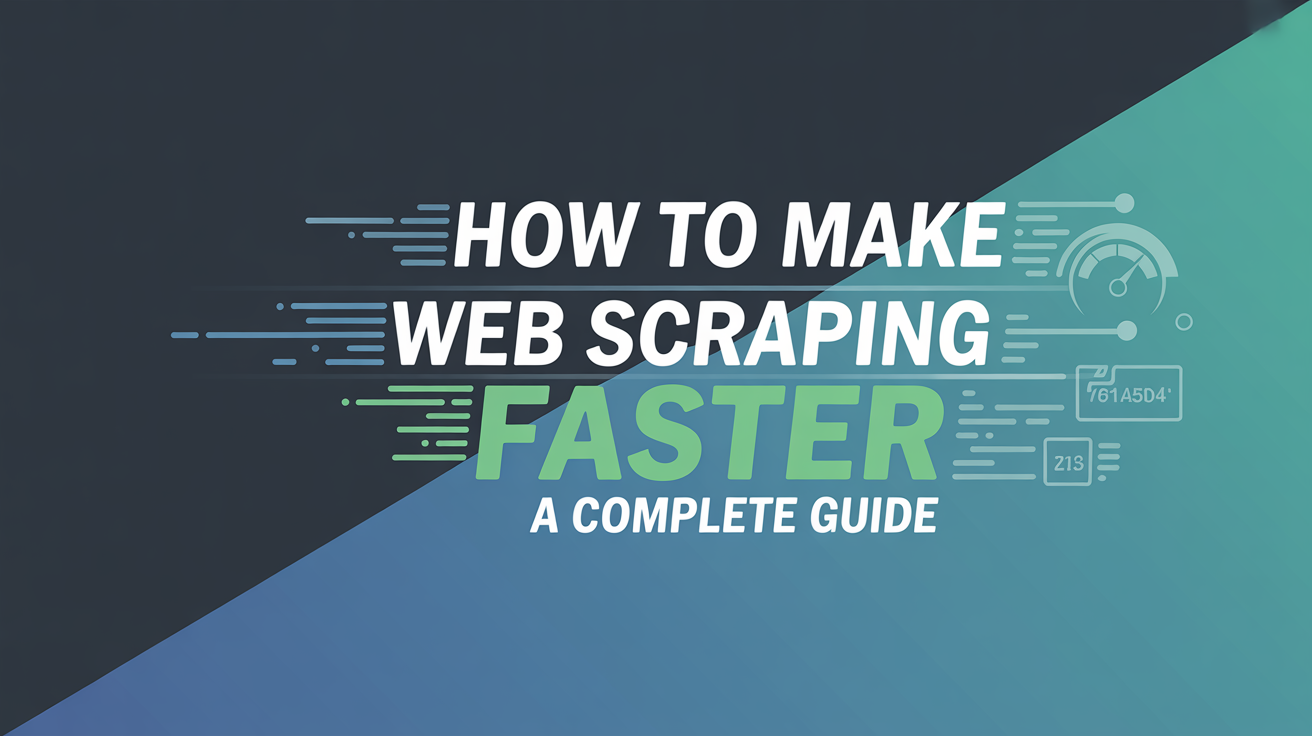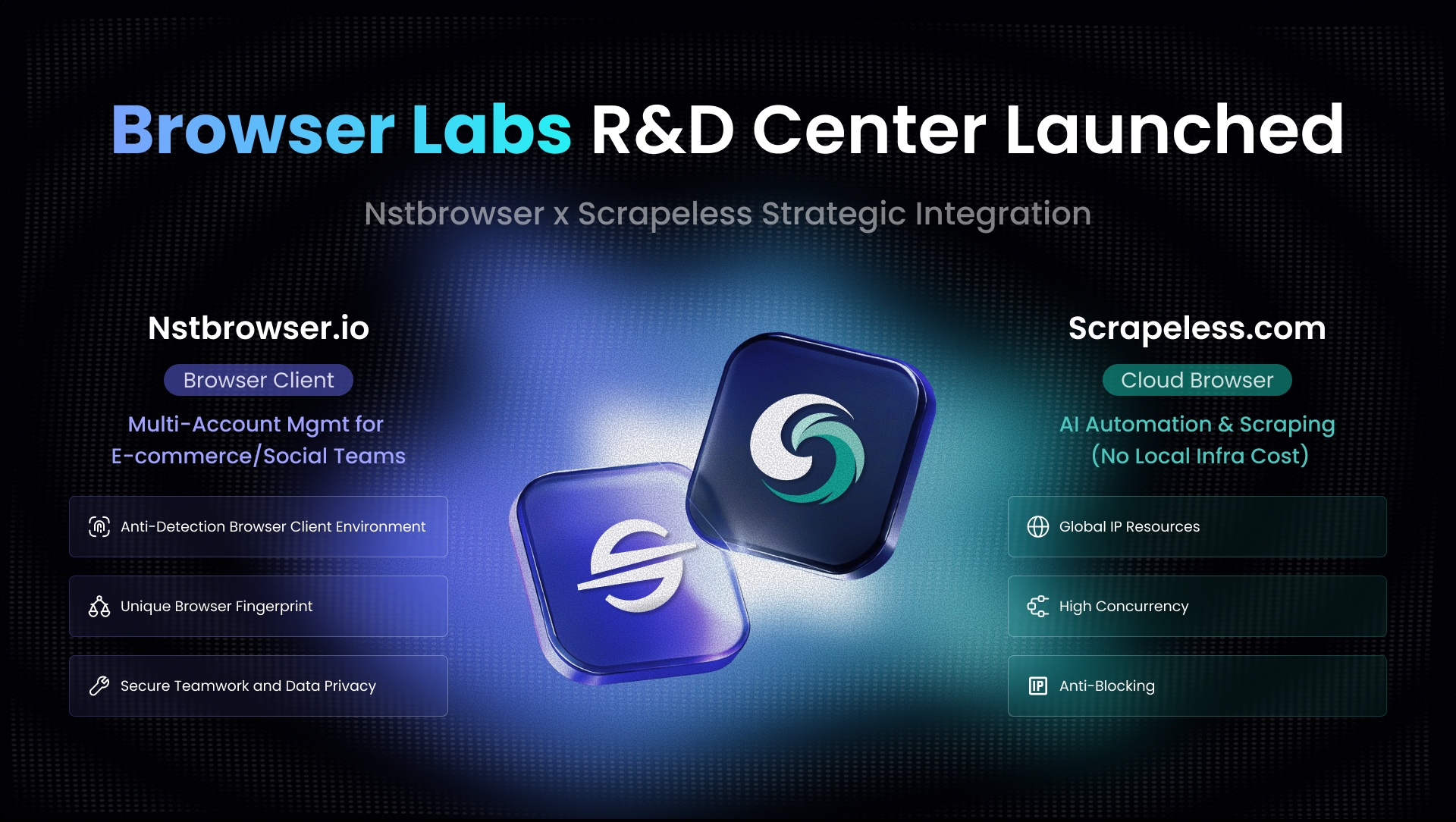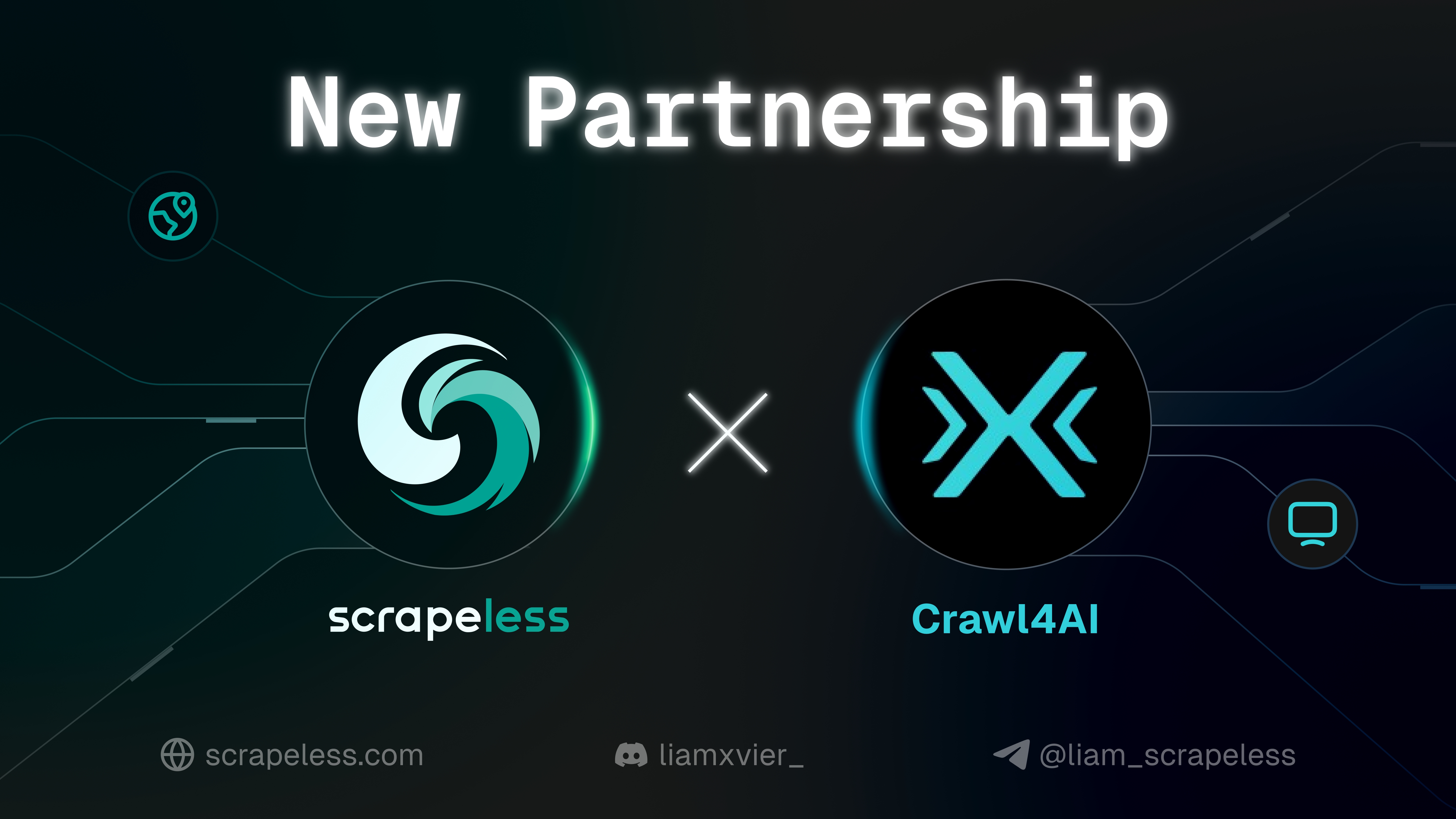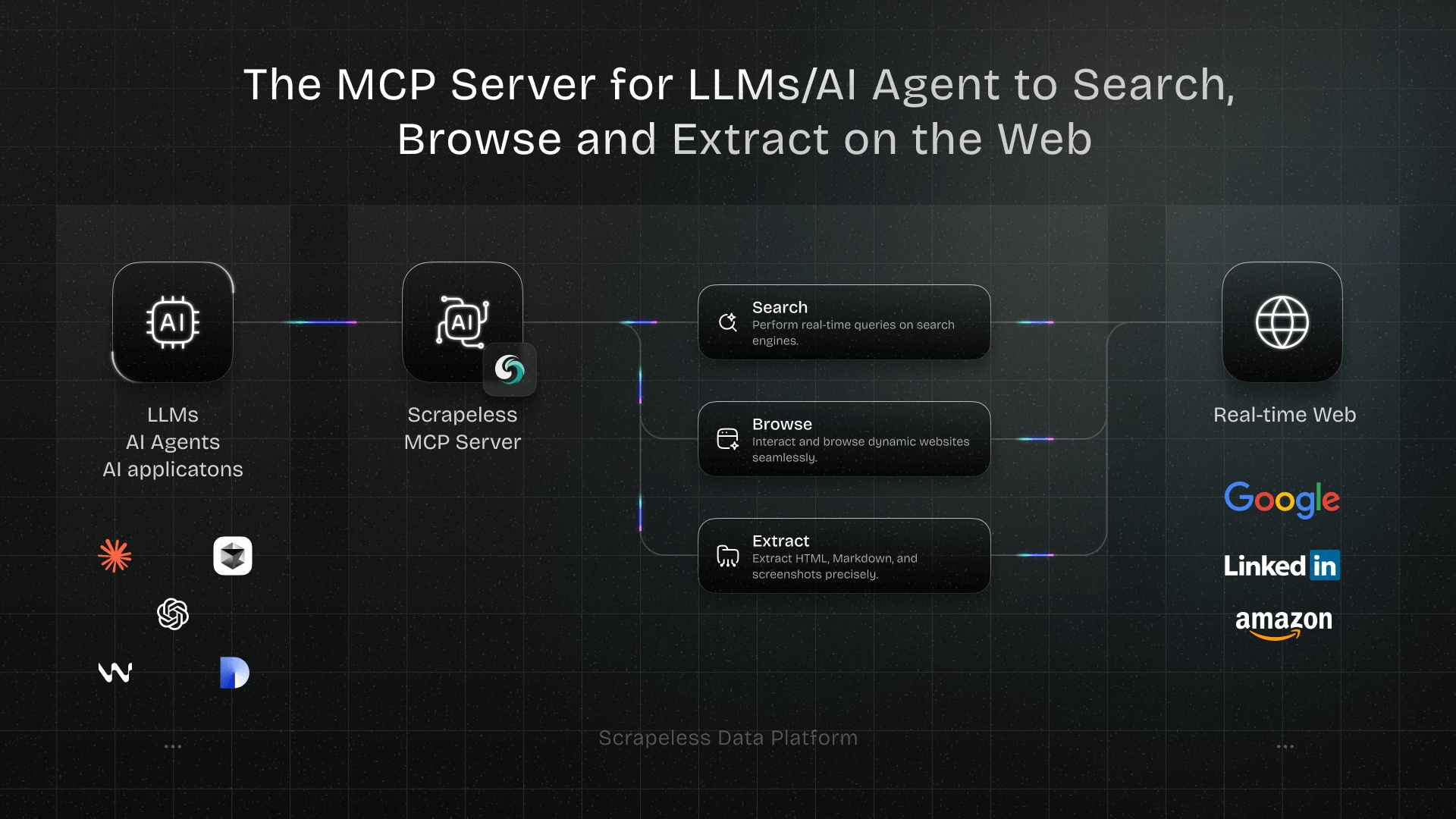How to Make Web Scraping Faster: A Complete Guide in 2025
Expert in Web Scraping Technologies
Key Takeaways
- Optimizing web scraping speed is crucial for efficient data collection, especially for large-scale projects.
- Common bottlenecks include slow server responses, CPU processing, and I/O operations.
- Implementing concurrency (multithreading, multiprocessing, asyncio) is a primary method to significantly accelerate scraping.
- This guide provides 10 detailed solutions, with code examples, to enhance your web scraping performance.
- For overcoming advanced challenges and achieving maximum speed and reliability, specialized tools like Scrapeless offer a powerful advantage.
Introduction
Web scraping has become an indispensable technique for businesses and researchers seeking to gather vast amounts of data from the internet. From market research and competitive analysis to academic studies and price monitoring, the ability to extract web data efficiently is paramount. However, as the scale of scraping projects grows, performance often becomes a critical bottleneck. Slow scraping can lead to prolonged data acquisition times, increased resource consumption, and even detection and blocking by target websites. This comprehensive guide, "How to Make Web Scraping Faster: A Complete Guide," delves into the essential strategies and techniques to significantly accelerate your web scraping operations. We will explore the common reasons behind slow scraping and provide 10 detailed solutions, complete with practical code examples, to optimize your scraping workflow. For those looking to bypass the complexities of manual optimization and achieve unparalleled speed and reliability, Scrapeless offers an advanced, managed solution that streamlines the entire process.
Understanding the Bottlenecks: Why Your Scraper is Slow
Before optimizing, it's essential to identify what's slowing down your web scraper. Several factors can contribute to sluggish performance [1]:
- Network Latency: The time it takes for your request to travel to the server and for the response to return. This is often the biggest bottleneck.
- Server Response Time: How quickly the target website's server processes your request and sends back data. This is largely out of your control.
- Sequential Processing: Performing one request at a time, waiting for each to complete before starting the next.
- CPU-Bound Tasks: Heavy parsing, complex data transformations, or extensive regular expression matching can consume significant CPU resources.
- I/O Operations: Reading from and writing to disk (e.g., saving data to files or databases) can be slow.
- Anti-Scraping Measures: Rate limiting, CAPTCHAs, and IP blocks can intentionally slow down or halt your scraping efforts.
- Inefficient Code: Poorly optimized selectors, redundant requests, or inefficient data structures can degrade performance.
Addressing these bottlenecks systematically is key to building a fast and efficient web scraper.
10 Solutions to Make Your Web Scraping Faster
1. Implement Concurrency with Multithreading
Multithreading allows your scraper to perform multiple tasks concurrently within a single process. While Python's Global Interpreter Lock (GIL) limits true parallel execution of CPU-bound tasks, it's highly effective for I/O-bound tasks like network requests, as threads can switch while waiting for responses [2].
Code Operation Steps:
- Use Python's
concurrent.futures.ThreadPoolExecutor:This example fetches multiple URLs concurrently, significantly reducing the total time compared to sequential fetching. Thepythonimport requests from bs4 import BeautifulSoup from concurrent.futures import ThreadPoolExecutor import time def fetch_and_parse(url): try: response = requests.get(url, timeout=10) response.raise_for_status() # Raise HTTPError for bad responses (4xx or 5xx) soup = BeautifulSoup(response.content, 'html.parser') # Example: Extract title title = soup.find('title').get_text() if soup.find('title') else 'No Title' return f"URL: {url}, Title: {title}" except requests.exceptions.RequestException as e: return f"Error fetching {url}: {e}" urls = [ "https://www.example.com", "https://www.google.com", "https://www.bing.com", "https://www.yahoo.com", "https://www.wikipedia.org", "https://www.amazon.com", "https://www.ebay.com", "https://www.reddit.com", "https://www.twitter.com", "https://www.linkedin.com" ] start_time = time.time() with ThreadPoolExecutor(max_workers=5) as executor: results = list(executor.map(fetch_and_parse, urls)) for result in results: print(result) end_time = time.time() print(f"Multithreading execution time: {end_time - start_time:.2f} seconds")max_workersparameter controls the number of parallel threads.
2. Leverage Asynchronous I/O with asyncio and httpx
Asynchronous programming, particularly with Python's asyncio library, is a highly efficient way to handle many concurrent I/O operations. It allows a single thread to manage multiple network requests without blocking, making it ideal for web scraping where most time is spent waiting for server responses [3].
Code Operation Steps:
- Install
httpx(an async-compatible HTTP client):bashpip install httpx - Implement asynchronous fetching:
python
import asyncio import httpx from bs4 import BeautifulSoup import time async def async_fetch_and_parse(client, url): try: response = await client.get(url, timeout=10) response.raise_for_status() soup = BeautifulSoup(response.content, 'html.parser') title = soup.find('title').get_text() if soup.find('title') else 'No Title' return f"URL: {url}, Title: {title}" except httpx.RequestError as e: return f"Error fetching {url}: {e}" async def main(): urls = [ "https://www.example.com", "https://www.google.com", "https://www.bing.com", "https://www.yahoo.com", "https://www.wikipedia.org", "https://www.amazon.com", "https://www.ebay.com", "https://www.reddit.com", "https://www.twitter.com", "https://www.linkedin.com" ] start_time = time.time() async with httpx.AsyncClient() as client: tasks = [async_fetch_and_parse(client, url) for url in urls] results = await asyncio.gather(*tasks) for result in results: print(result) end_time = time.time() print(f"Asyncio execution time: {end_time - start_time:.2f} seconds") if __name__ == "__main__": asyncio.run(main())asynciois generally more efficient than multithreading for I/O-bound tasks because it avoids the overhead of thread management and context switching.
3. Utilize Multiprocessing for CPU-Bound Tasks
While multithreading is great for I/O, multiprocessing is ideal for CPU-bound tasks (e.g., heavy data processing, complex calculations) because it bypasses Python's GIL, allowing true parallel execution across multiple CPU cores [4].
Code Operation Steps:
- Use Python's
concurrent.futures.ProcessPoolExecutor:This approach separates I/O-bound fetching from CPU-bound processing, optimizing both stages.pythonimport requests from bs4 import BeautifulSoup from concurrent.futures import ProcessPoolExecutor import time def process_html(html_content): # Simulate a CPU-intensive task like complex parsing or data extraction soup = BeautifulSoup(html_content, 'html.parser') # More complex parsing logic here paragraphs = soup.find_all('p') num_paragraphs = len(paragraphs) return f"Processed HTML with {num_paragraphs} paragraphs." def fetch_and_process(url): try: response = requests.get(url, timeout=10) response.raise_for_status() return response.content # Return raw HTML for processing except requests.exceptions.RequestException as e: return f"Error fetching {url}: {e}" urls = [ "https://www.example.com", "https://www.google.com", "https://www.bing.com", "https://www.yahoo.com", "https://www.wikipedia.org", "https://www.amazon.com", "https://www.ebay.com", "https://www.reddit.com", "https://www.twitter.com", "https://www.linkedin.com" ] start_time = time.time() # First, fetch all HTML content (I/O-bound, can use ThreadPoolExecutor or asyncio) html_contents = [] with ThreadPoolExecutor(max_workers=5) as fetch_executor: html_contents = list(fetch_executor.map(fetch_and_process, urls)) # Then, process HTML content in parallel (CPU-bound) with ProcessPoolExecutor(max_workers=4) as process_executor: results = list(process_executor.map(process_html, html_contents)) for result in results: print(result) end_time = time.time() print(f"Multiprocessing execution time: {end_time - start_time:.2f} seconds")
4. Use a Faster HTML Parser
The choice of HTML parser can significantly impact performance, especially when dealing with large or malformed HTML documents. lxml is generally faster than BeautifulSoup's default html.parser [5].
Code Operation Steps:
- Install
lxml:bashpip install lxml - Specify
lxmlas the parser forBeautifulSoup:Benchmarking different parsers for your specific use case can reveal significant speed improvements.pythonfrom bs4 import BeautifulSoup import requests import time url = "https://www.wikipedia.org" start_time = time.time() response = requests.get(url) # Using 'lxml' parser soup = BeautifulSoup(response.content, 'lxml') title = soup.find('title').get_text() end_time = time.time() print(f"Title: {title}") print(f"Parsing with lxml took: {end_time - start_time:.4f} seconds") start_time = time.time() response = requests.get(url) # Using default 'html.parser' soup = BeautifulSoup(response.content, 'html.parser') title = soup.find('title').get_text() end_time = time.time() print(f"Title: {title}") print(f"Parsing with html.parser took: {end_time - start_time:.4f} seconds")
5. Optimize Selectors and Data Extraction
Inefficient selectors can slow down parsing. Prefer CSS selectors or XPath over complex regular expressions when possible, and extract only the necessary data [6].
Code Operation Steps:
- Use precise CSS selectors:
Always aim for the most direct path to the data you need. Avoidpython
from bs4 import BeautifulSoup import requests import time url = "https://quotes.toscrape.com" response = requests.get(url) soup = BeautifulSoup(response.content, 'lxml') start_time = time.time() # Efficient: direct CSS selector quotes_efficient = soup.select('div.quote span.text') texts_efficient = [q.get_text() for q in quotes_efficient] end_time = time.time() print(f"Efficient extraction took: {end_time - start_time:.6f} seconds") start_time = time.time() # Less efficient: broader search then filter (conceptual, depends on HTML structure) quotes_less_efficient = soup.find_all('div', class_='quote') texts_less_efficient = [] for quote_div in quotes_less_efficient: text_span = quote_div.find('span', class_='text') if text_span: texts_less_efficient.append(text_span.get_text()) end_time = time.time() print(f"Less efficient extraction took: {end_time - start_time:.6f} seconds")find_all()followed by anotherfind_all()if a single, more specific selector can achieve the same result.
6. Use Persistent HTTP Sessions
For multiple requests to the same domain, establishing a persistent HTTP session can significantly reduce overhead. The requests library's Session object reuses the underlying TCP connection, avoiding the handshake process for each request [7].
Code Operation Steps:
- Create a
requests.Sessionobject:This is particularly effective when scraping many pages from the same website.pythonimport requests import time urls = [ "https://quotes.toscrape.com/page/1/", "https://quotes.toscrape.com/page/2/", "https://quotes.toscrape.com/page/3/" ] start_time = time.time() # Without session for url in urls: requests.get(url) end_time = time.time() print(f"Without session: {end_time - start_time:.4f} seconds") start_time = time.time() # With session with requests.Session() as session: for url in urls: session.get(url) end_time = time.time() print(f"With session: {end_time - start_time:.4f} seconds")
7. Implement Smart Request Throttling and Delays
While speed is the goal, aggressive scraping can lead to IP bans or server overload. Implementing smart throttling with random delays not only prevents detection but also helps manage server load, ensuring a sustainable scraping process [8].
Code Operation Steps:
- Use
time.sleep()with random intervals:This balances speed with politeness, making your scraper less detectable and more robust in the long run.pythonimport requests import time import random urls = [ "https://quotes.toscrape.com/page/1/", "https://quotes.toscrape.com/page/2/", "https://quotes.toscrape.com/page/3/" ] for url in urls: try: response = requests.get(url) response.raise_for_status() print(f"Successfully fetched {url}") except requests.exceptions.RequestException as e: print(f"Error fetching {url}: {e}") finally: # Introduce a random delay between 1 to 3 seconds delay = random.uniform(1, 3) print(f"Waiting for {delay:.2f} seconds...") time.sleep(delay)
8. Use Distributed Scraping
For extremely large-scale projects, distributing your scraping tasks across multiple machines or cloud instances can provide massive speed improvements. This involves setting up a cluster of scrapers that work in parallel [9].
Methodology and Tools:
- Task Queues: Use message brokers like RabbitMQ or Apache Kafka to distribute URLs or tasks to worker nodes.
- Distributed Frameworks: Tools like Scrapy (with its distributed components) or custom solutions built with Celery can manage distributed scraping.
- Cloud Platforms: Leverage cloud services (AWS, GCP, Azure) to spin up and manage multiple scraping instances.
Example/Application: A company needing to scrape millions of product pages from various e-commerce sites might deploy a distributed system where a central orchestrator feeds URLs to dozens or hundreds of worker nodes, each fetching and processing a subset of the data. This dramatically reduces the total scraping time.
9. Cache Responses
If you frequently request the same data or parts of a website that don't change often, caching responses can save significant time by avoiding redundant network requests [10].
Code Operation Steps:
- Use a caching library like
requests-cache:bashpip install requests-cache - Integrate
requests-cache:The first request topythonimport requests import requests_cache import time # Install cache for all requests for 5 minutes requests_cache.install_cache('my_cache', expire_after=300) urls = [ "https://www.example.com", "https://www.google.com", "https://www.example.com" # Requesting example.com again ] for url in urls: start_time = time.time() response = requests.get(url) end_time = time.time() print(f"Fetched {url} (Cached: {response.from_cache}) in {end_time - start_time:.4f} seconds") # Disable cache when done requests_cache.uninstall_cache()example.comwill be slow, but the second will be served from the cache almost instantly.
10. Use Headless Browsers Only When Necessary
Headless browsers (like Playwright or Selenium) are powerful for scraping JavaScript-rendered content but are significantly slower and more resource-intensive than direct HTTP requests. Use them only when strictly necessary [11].
Methodology and Tools:
- Analyze Website: Before using a headless browser, inspect the website's source code. If the data is present in the initial HTML (view-source), a simple
requestscall is sufficient. - Conditional Use: Implement logic to first try fetching with
requests. If the required data is missing, then fall back to a headless browser. - Optimize Headless Browser Settings: Minimize resource usage by disabling images, CSS, and unnecessary plugins when using headless browsers.
Example/Application: If you're scraping product prices, first try a requests.get() call. If the prices are loaded via JavaScript, then use Playwright. This hybrid approach ensures you use the fastest method available for each part of the scraping task.
Comparison Summary: Web Scraping Optimization Techniques
| Technique | Primary Benefit | Complexity | Best For | Considerations |
|---|---|---|---|---|
| Multithreading | Concurrent I/O operations | Medium | I/O-bound tasks (network requests) | Python GIL limits true parallelism for CPU-bound tasks |
Asynchronous I/O (asyncio) |
Highly efficient concurrent I/O | Medium | I/O-bound tasks, high concurrency | Requires async-compatible libraries (e.g., httpx) |
| Multiprocessing | Parallel CPU-bound tasks | High | Heavy parsing, data transformation | Higher overhead than threads, inter-process communication |
Faster HTML Parser (lxml) |
Faster parsing | Low | Large or complex HTML documents | Requires lxml installation |
| Optimized Selectors | Faster data extraction | Low | Any scraping task | Requires good understanding of HTML/CSS/XPath |
| Persistent HTTP Sessions | Reduced network overhead | Low | Multiple requests to the same domain | Maintains cookies and headers across requests |
| Smart Throttling/Delays | Avoids detection/blocks | Low | Sustainable scraping, politeness | Balances speed with ethical considerations |
| Distributed Scraping | Massive scale, geographic distribution | Very High | Extremely large datasets, high throughput | Significant infrastructure and management overhead |
| Response Caching | Avoids redundant requests | Low | Static or infrequently updated data | Cache invalidation strategy needed |
| Conditional Headless Browsers | Resource efficiency, speed | Medium | JavaScript-rendered content only when needed | Requires logic to detect JS-rendered content |
This table provides a quick overview of various optimization techniques, helping you choose the most suitable ones based on your project's specific needs and constraints.
Why Scrapeless is the Ultimate Accelerator for Web Scraping
While implementing the above techniques can significantly speed up your web scraping efforts, the reality of modern web scraping often involves a constant battle against sophisticated anti-bot systems, dynamic content, and ever-changing website structures. Manually managing proxies, rotating User-Agents, solving CAPTCHAs, and ensuring JavaScript rendering across a large-scale, high-speed operation can become an overwhelming and resource-intensive task. This is where Scrapeless provides an unparalleled advantage, acting as the ultimate accelerator for your web scraping projects.
Scrapeless is a fully managed web scraping API that handles all these complexities automatically. It intelligently routes your requests through a vast network of residential proxies, rotates User-Agents and headers, bypasses CAPTCHAs, and renders JavaScript-heavy pages, delivering clean, structured data directly to you. By offloading these intricate challenges to Scrapeless, you can achieve maximum scraping speed and reliability without the overhead of building and maintaining your own complex infrastructure. It allows you to focus on what truly matters: leveraging the extracted data for your business or research, rather than fighting technical hurdles. Whether you're dealing with a few pages or millions, Scrapeless ensures your data acquisition is fast, seamless, and consistently successful.
Conclusion and Call to Action
Optimizing web scraping speed is a critical endeavor for anyone engaged in data extraction from the internet. By understanding the common bottlenecks and implementing the 10 detailed solutions outlined in this guide—from concurrency and efficient parsing to persistent sessions and smart throttling—you can dramatically improve the performance and efficiency of your scraping operations. These techniques empower you to collect more data in less time, making your projects more viable and impactful.
However, the dynamic nature of the web and the continuous evolution of anti-bot technologies mean that maintaining a fast and reliable scraper can be a perpetual challenge. For those seeking a truly accelerated and hassle-free solution, especially when facing complex websites or large-scale data needs, Scrapeless stands out. It provides a robust, managed API that handles all the intricate details of bypassing website defenses, allowing you to achieve optimal scraping speed and data delivery with minimal effort.
Ready to supercharge your web scraping and unlock unprecedented data acquisition speeds?
Explore Scrapeless and accelerate your data projects today!
FAQ (Frequently Asked Questions)
Q1: Why is web scraping speed important?
A1: Web scraping speed is crucial for several reasons: it reduces the time to acquire large datasets, allows for more frequent data updates (e.g., real-time price monitoring), minimizes resource consumption (CPU, memory, network), and helps avoid detection and blocking by websites due to prolonged, slow requests.
Q2: What is the main difference between multithreading and multiprocessing for web scraping?
A2: Multithreading is best for I/O-bound tasks (like waiting for network responses) as threads can switch when one is waiting, making efficient use of CPU time. Multiprocessing is best for CPU-bound tasks (like heavy data parsing) as it uses separate CPU cores, bypassing Python's Global Interpreter Lock (GIL) for true parallel execution.
Q3: How can I avoid getting blocked while trying to scrape faster?
A3: To avoid blocks while scraping faster, implement smart throttling with random delays, rotate IP addresses using proxies, use realistic User-Agent strings, manage cookies and sessions, and avoid making requests too aggressively. For advanced anti-bot systems, consider using specialized services like Scrapeless that handle these complexities automatically.
Q4: When should I use a headless browser versus a direct HTTP request?
A4: Use a direct HTTP request (e.g., with requests library) when the data you need is present in the initial HTML source code of the page. Use a headless browser (e.g., Playwright, Selenium) only when the content is dynamically loaded or rendered by JavaScript after the initial page load, as headless browsers are more resource-intensive and slower.
Q5: Can Scrapeless help with speeding up my existing web scraper?
A5: Yes, Scrapeless can significantly speed up your web scraper, especially by handling the most time-consuming and complex aspects of modern web scraping. It automatically manages proxy rotation, User-Agent rotation, CAPTCHA solving, and JavaScript rendering, allowing your scraper to focus solely on data extraction without getting bogged down by anti-bot measures, thus improving overall efficiency and reliability.
At Scrapeless, we only access publicly available data while strictly complying with applicable laws, regulations, and website privacy policies. The content in this blog is for demonstration purposes only and does not involve any illegal or infringing activities. We make no guarantees and disclaim all liability for the use of information from this blog or third-party links. Before engaging in any scraping activities, consult your legal advisor and review the target website's terms of service or obtain the necessary permissions.



